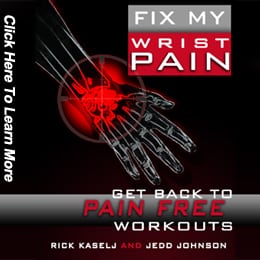Pilates for improved flexibility
I have Sylvia Flavela back with another article for you on how Pilates can help improve your flexibility.
Enjoy.
~ Rick
======================
Pilates brings about balance and alignment to the body, helping achieve strength, flexibility and body awareness.
This style of training can positively affect posture and balance, mostly from carrying the upper bodyweight in a better fashion via better hip and back alignment.
I remember way back in the day as a little kid, I’d jump, run and climb all over the monkey bars at school with absolutely zero limitations.
But now? It’s a whole different story.
With age, wear and tear of the body from normal and sometimes aggressive movements can wreak havoc on the body. Let’s face it, we aren’t young anymore.
The loss of flexibility, daily struggles of simple movements and lack of the ability to spring up to our feet with ease is a struggle I see so many suffer from. Living with some type of thrashing pain overwhelming the body is no picnic.
We live in era where we sit, and sit a lot all day long. Time is spent on computers, iPads, iPhones and just about every other digital handheld item out there. It keeps the body sedentary and if you don’t use you lost it.
And it’s exactly that.
Pilates is the GO-TO method when a strong core is the remedy for improving flexibility and keeping low back pain at bay. With proper body alignment and correct positioning mobility and flexibility is improved.
Do not ignore the body’s warning signals, for example if it’s painful to bend over to ties your shoes or getting up out of a chair is a strenuous task then it’s about time to add in a few Pilates moves to help with flexibility.
You can’t expect flexibility to happen overnight. It won’t…I hate to break it to you but it’s true. When you look back at how many years you’ve felt the stiffness and tightness in your body, it will take time to move the body in a manner that will
increase flexibility.
Imagine not feeling pain when you have to get up out of your desk at work or the enjoyment of playing tag with your kids without feeling your tight muscles tugging at you.
Give your body time to adjust itself and don’t give up, the more you consistently practice Pilates you’ll notice a significant difference in your movement.
In the video below I demonstrate three different Pilates exercises you can start practicing right away. Please pay careful attention to my points about how to properly hold your position with each exercise for maximum results.
Here are a few cues to keep in mind when practicing your Pilates exercises:
- If it is a challenge to extend the legs straight, slightly bend them at the knees.
- Keep your belly button pulled in towards your spine at all times.
- Do not thrust your ribs forward.
- Control your breath, so you are pulling your ribs in towards each other and breathing to the side and back of the body.
- Keep both shoulder blades pulled down and back.
- Keep your pelvis in neutral position as much as possible.
- Continue to breath through the exercise with control. By this I mean don’t throw the legs and body around. Control each movement.
- Do not tuck your chin down to the chest; keep the head in line with the spine the entire time.
The last move in the video, the ‘Roll Over’ can be a bit intimidating and challenging. Important! Keep your head down at all times when you bring your legs overhead.
If you find this move particularly hard, start by bringing your arms overhead and hold onto the bottom of a bedpost or something stationary, then bend both knees and roll the hips and pelvis off the floor. This move is great for stretching the low back and hamstrings.
Control and body awareness is important when executing any of these moves. It does take practice to move with control and balance but once achieved you reap the benefits of a balanced, flexible body.
If you would like more Pilates exercises that will help with flexibility, go here.
Sylvia Favela
.




